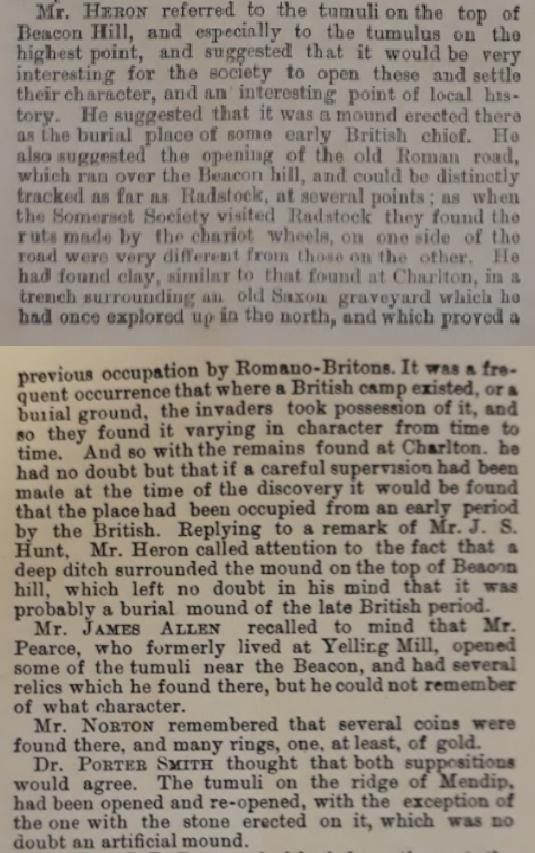In late October 1840, a Mr Rugg was digging one of the barrows when he discovered 12-14 urns. The discovery was recorded in newspapers of the time:
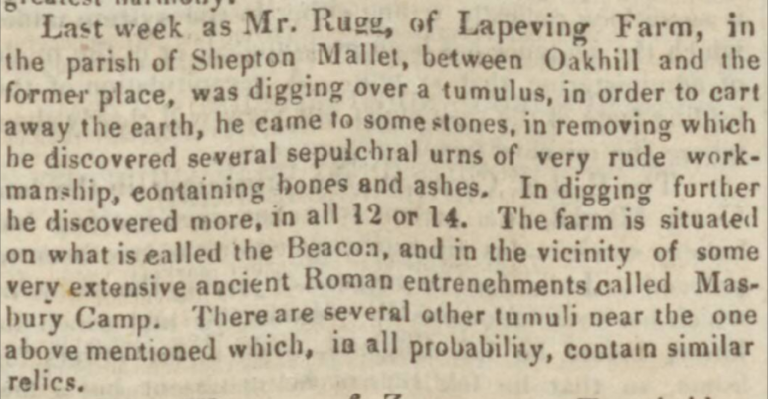
Jonas Rugg lived at Croscombe for over 50 years. His obituary in the Shepton Mallet Journal for 23rd November 1894 mentions that he was the a member of the Shepton Mallet Board of Guardians for over forty years and was the surveyor for the Shepton Mallet Highways District from its inception until 1889:
“…He had done his work fairly well. Latterly, a great deal of fault had been found that the roads had been let down. That was as much the fault of the ratepayers as of Mr. Rugg. They were always crying out that they wanted the rates kept down, and though Mr. Rugg tried to keep a good smooth surface on the road, there was no depth of metal, and it had meant a heavy expenditure since the county had taken them over, to bring the roads up into condition…”
This could explain why he was “carting away the earth” from one of the barrows. It is also worth noting that this was not his only discovery in the area, in SANHS vol. 53 (1907) part II page 77, in an article on Maesbury Castle it states that “Some fragments of flint found by the late Mr. Jonas Rugg of Croscombe, are said to have been unearthed at Maesbury.” His death notice in the Shepton Mallet Journal for 9th November 1894 mentions:
“…Besides being guardian and way warden he was also at times overseer and church warden, a trustee of the National School and of the charities at Croscombe, and a member of the Church restoration committee. In the latter capacity he rendered valuable service to archaeology in the sternness with which he set his face against unnecessary tampering with the building…”
The Beacon Hill discovery is further elaborated in the memorial edition of J.E. Farbrothers’ “Shepton Mallet: Notes on its History”, the supplementary chapter was added by Rev. E. H. F Cosens M.A and published in 1872:
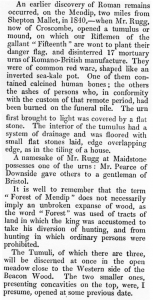
This mention of the opening of a barrow could provide further clues to the location of the discovery:
“on which our Riflemen of the gallant ‘Fifteenth’ are wont to plant their danger flag”
The “gallant Fifteenth”, which refers to the 15th East Somerset Rifle Volunteers, was not established until 1860, so is probably a mistake:
“15th Formed as one company at Shepton Mallet on 24th March 1860 with Henry Ernst as captain, Henry T. Wickham, lieutenant and Samuel Craddock, ensign. Joined the 3rd Admin Battalion and became ‘E’ company of the new 3rd Corps in 1880. Brewing and manufacture of cloth were the main source of employment in Shepton Mallet, five miles south-east of Wells.” – Tracing the Rifle Volunteers: A Guide for Military and Family Historians by Ray Westlake
However, the North Somerset Yeomanry had a volunteer rifle company attached to it as early as 1817 (see “The North Somerset Yeomanry Cavalry, 1850” ). The first edition O/S map shows two danger flags either side of the rifle range.
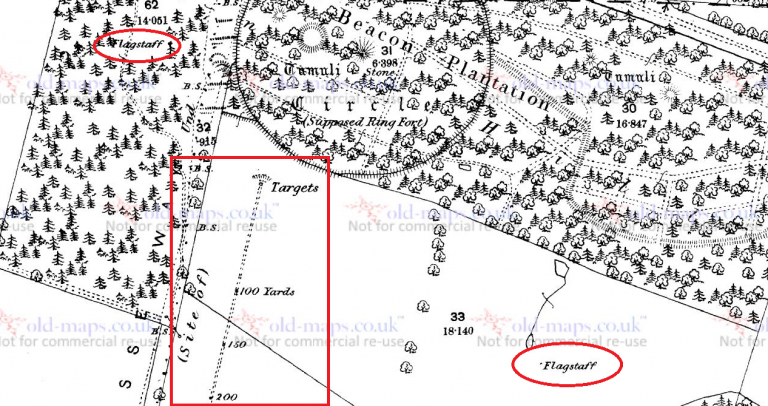
The base of one of them can still be seen in the woods:
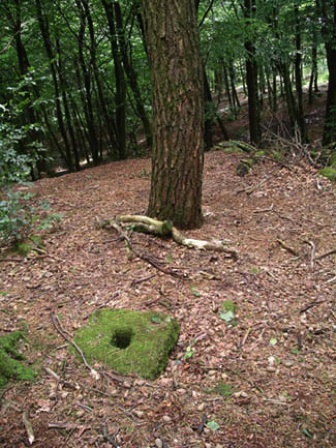
The reference to Mr. Pearce of Downside is also useful, this is a Mr. George Pearce who was the miller at Yelling Mill, Downside from at least 1841-1871. Mr. Pearce also gets a mention in vol. 1 pt. 3 of the proceedings of the “Shepton Mallet Natural History and Archaeological Society”:
